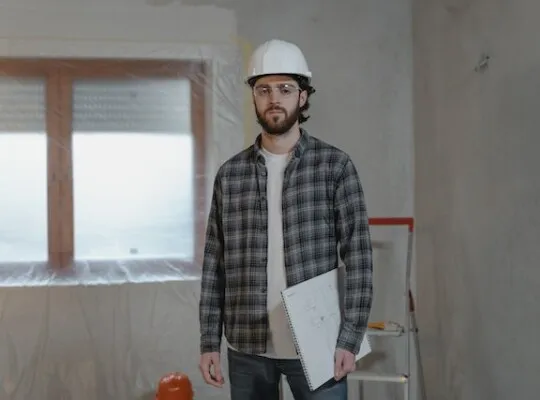Construction estimates are a crucial aspect of any building project. Accurate estimates help contractors plan effectively, manage resources, and ensure the success of their projects. In this comprehensive guide, we will explore the fundamentals of construction estimates, the steps to create a detailed estimate, and the common pitfalls to avoid. We will also discuss how leveraging technology can streamline the estimating process and highlight best practices for effective construction estimating.
Understanding the Basics of Construction Estimates
Construction estimates serve as a blueprint for project planning and budgeting. They provide an estimation of the costs involved in various aspects of the construction process, such as materials, labor, overhead, and profit margins. Accurate estimates are essential for winning bids and securing funding for projects.
The Importance of Accurate Construction Estimates
Accurate construction estimates are the foundation of project success. They enable contractors to establish realistic budgets, avoid cost overruns, and meet client expectations. A well-planned and accurate estimate instills confidence in clients and stakeholders, helping to establish a positive reputation within the industry.
Key Components of a Construction Estimate
A construction estimate consists of several key components, including:
- The quantity and cost of materials needed for the project.
- An assessment of labor costs, including wages, benefits, and productivity.
- Incorporation of overhead expenses, such as equipment, permits, and insurance.
- A profit margin that accounts for the contractor’s desired return on investment.
Materials are a crucial component of any construction project. The estimate should include a detailed breakdown of the materials required, including the quantity and cost of each item. This information allows contractors to accurately budget for the materials and ensure they are available when needed.
Labor costs are another significant aspect of construction estimates. Contractors need to consider not only the wages of their workers but also any benefits and productivity factors. Estimating labor costs requires a thorough understanding of the project’s scope and the skills and experience required for each task.
Overhead expenses encompass various costs that are necessary for the smooth operation of a construction project. These may include equipment rentals or purchases, permits and inspections, insurance coverage, and administrative expenses. It is crucial to factor in these expenses to ensure that the estimate reflects the true cost of the project.
Lastly, a construction estimate should include a profit margin. This margin accounts for the contractor’s desired return on investment and covers any unforeseen expenses or risks. It is important to strike a balance between a competitive bid and a reasonable profit margin to ensure the project’s financial viability.
By considering all these components and providing a detailed and accurate estimate, contractors can increase their chances of winning bids and successfully completing construction projects. Accurate estimates not only benefit the contractor but also the client, as they establish transparency and trust in the business relationship.
Steps to Create a Detailed Construction Estimate
Gathering Necessary Information
The first step in creating a detailed construction estimate is to gather all the necessary information. This includes project plans, specifications, and any other relevant documentation. It is important to fully understand the scope and requirements of the project before proceeding.
When gathering the necessary information, it is essential to communicate with the client and other stakeholders involved in the project. This allows for a clear understanding of their expectations, preferences, and any specific requirements they may have. By engaging in effective communication, potential misunderstandings can be minimized, resulting in a more accurate and comprehensive estimate.
Calculating Material and Labor Costs
Once the necessary information is gathered, the next step is to calculate the costs of materials and labor. This involves obtaining quotes from suppliers, considering market prices, and factoring in the time and effort required for each task.
When calculating material costs, it is crucial to consider the quality and quantity of materials needed for the project. By carefully evaluating the project plans and specifications, a more accurate estimate can be achieved. Additionally, it is important to account for any potential price fluctuations in the market, as this can impact the overall cost of materials.
When estimating labor costs, it is necessary to assess the skill level and experience required for each task. Different tasks may require different levels of expertise, which can affect the labor cost. It is also important to consider the duration of each task, as this will impact the overall labor cost as well.
Incorporating Overhead and Profit Margins
Overhead costs, such as equipment rental, permits, and insurance, should be added to the estimate. These costs are essential for the successful completion of the project and should not be overlooked. By accurately incorporating overhead costs, the estimate becomes more comprehensive and reflective of the true project expenses.
Additionally, a profit margin should be included in the estimate. This ensures that the contractor’s financial viability is maintained and allows for future business growth. Determining the appropriate profit margin requires careful consideration of various factors, such as market competition, project complexity, and the contractor’s desired return on investment.
Balancing these costs is crucial to remain competitive in the market without compromising profitability. It requires a thorough analysis of the estimated costs and an understanding of the market dynamics. By striking the right balance, contractors can provide accurate estimates that are both attractive to clients and sustainable for their business.
Common Pitfalls in Construction Estimating and How to Avoid Them
Construction estimating is a critical aspect of any construction project. It involves assessing the costs involved in materials, labor, and other factors to create an accurate estimate of the project’s overall expenses. However, there are several common pitfalls that estimators may encounter, which can lead to unexpected costs and delays. In this article, we will explore some of these pitfalls and provide valuable insights on how to avoid them.
Underestimating Material Costs
One of the most prevalent pitfalls in construction estimating is underestimating material costs. This can occur when estimators fail to thoroughly research market prices or obtain accurate quotes from suppliers. Underestimating material costs can result in unexpected expenses that can significantly impact the project’s budget. To avoid this pitfall, it is crucial to conduct comprehensive market research and obtain multiple quotes from reliable suppliers. Additionally, building contingencies into the estimate can help mitigate the risk of underestimating material costs.
Overlooking Labor Costs
Another common pitfall in construction estimating is overlooking labor costs. Estimators may fail to accurately assess labor requirements and productivity rates, leading to project delays and cost overruns. To avoid this pitfall, it is essential to account for labor costs at every stage of the estimate. This includes considering factors such as the number of workers required, their skill levels, and the time needed to complete specific tasks. By conducting a thorough analysis of labor costs, estimators can ensure that their estimates are accurate and realistic.
Neglecting to Factor in Project Delays
Project delays are an inevitable reality in the construction industry. Factors such as adverse weather conditions, unforeseen site conditions, or delays in the delivery of materials can significantly impact the project’s timeline. Neglecting to factor in potential delays can lead to inaccurate estimates and financial setbacks. To avoid this pitfall, estimators should include a buffer for unexpected delays in their estimates. This buffer can account for potential disruptions and provide a safety net to mitigate the impact of delays on the project’s budget.
Construction estimating is a complex process that requires careful consideration of various factors. By being aware of the common pitfalls and taking proactive measures to avoid them, estimators can create accurate estimates that help ensure the success of construction projects. Thorough research, attention to detail, and a comprehensive understanding of the project’s requirements are essential in developing reliable estimates that set the foundation for a successful construction endeavor.
Leveraging Technology in Construction Estimating
Construction estimating plays a crucial role in the success of any construction project. Accurate estimates ensure that projects are completed within budget and on time. While traditional estimating methods have been used for decades, advancements in technology have revolutionized the way estimators work. One way to streamline the estimating process is to leverage construction estimating software.
Construction estimating software is a powerful tool that automates calculations, improves accuracy, and enhances efficiency. With just a few clicks, estimators can input project details, such as quantities, materials, and labor costs, and the software will generate a comprehensive estimate. This eliminates the need for manual calculations, reducing the risk of human error and saving valuable time.
Another benefit of construction estimating software is its ability to facilitate collaboration. Estimators can easily share project information with team members, subcontractors, and clients, allowing for seamless communication and feedback. This collaborative approach ensures that everyone is on the same page, minimizing misunderstandings and delays.
Cost tracking is another key feature of estimating software. Estimators can monitor project expenses in real-time, tracking costs against the estimated budget. This enables them to identify any discrepancies early on and make necessary adjustments to keep the project on track financially.
In addition to cost tracking, estimating software also generates detailed reports. These reports provide a comprehensive breakdown of the estimated costs, including material quantities, labor hours, and equipment costs. This level of detail allows project managers to make informed decisions and allocate resources effectively.
When choosing the right estimating tool for your business, there are several factors to consider. Ease of use is essential, as you want a software that is intuitive and user-friendly. Functionality is another crucial aspect to evaluate. Look for features that align with your specific needs, such as the ability to handle complex projects or integrate with other software.
Integration with other software is particularly important, as it allows for seamless data transfer between different systems. For example, if you use project management software or accounting software, you want your estimating tool to integrate with these systems to avoid duplicate data entry and ensure data consistency.
Customer support is another critical factor to consider. Look for a software provider that offers reliable customer support, including training resources and responsive technical assistance. This ensures that you can maximize the benefits of the software and address any issues or questions that may arise.
Investing in the right estimating tool can greatly enhance the accuracy and efficiency of your estimates. It allows you to leverage technology to streamline the estimating process, automate calculations, and generate detailed reports. By choosing a tool that aligns with your business needs, you can take your estimating capabilities to the next level and stay ahead in the competitive construction industry.
Best Practices for Effective Construction Estimating
Regularly Review and Update Estimates
Construction estimates should not be considered a one-time task. Regularly reviewing and updating estimates throughout the project ensures that costs remain accurate and aligned with any changes in scope, materials, or market conditions.
It is important to understand that construction projects are dynamic in nature. As the project progresses, there may be unforeseen circumstances that require adjustments to the initial estimate. By regularly reviewing and updating estimates, contractors can ensure that they have a clear understanding of the current costs and can make informed decisions.
Furthermore, updating estimates allows for better cost control and budget management. By identifying any discrepancies or deviations from the original estimate, contractors can take proactive measures to address them and avoid cost overruns.
Communicate Clearly with Clients and Stakeholders
Clear communication is key to successful project management. Regularly update clients and stakeholders on the progress of the estimate and any changes that may impact the budget. Transparent communication helps to build trust and maintain strong relationships.
When it comes to construction estimating, effective communication is essential. Contractors should ensure that they clearly explain the estimating process to clients and stakeholders, including the factors and assumptions considered in the estimate. This helps to manage expectations and avoid misunderstandings.
In addition, regular communication throughout the project allows for timely adjustments to the estimate. By keeping clients and stakeholders informed about any changes that may impact the budget, contractors can maintain transparency and avoid surprises.
Furthermore, effective communication fosters collaboration and encourages feedback. By actively seeking input from clients and stakeholders, contractors can gain valuable insights that can help improve the accuracy and reliability of the estimate.
Continuously Improve Your Estimating Skills
Estimating is a skill that can always be improved. Stay updated on industry trends, attend training programs, and seek feedback from peers and mentors. Continuous improvement in estimating skills will lead to more accurate and reliable estimates.
Construction estimating is a complex task that requires a combination of technical knowledge, experience, and analytical skills. To excel in this field, contractors should invest in their professional development.
One way to improve estimating skills is to stay updated on industry trends and best practices. The construction industry is constantly evolving, and new technologies, materials, and techniques emerge regularly. By staying informed, contractors can incorporate the latest advancements into their estimating process, resulting in more accurate estimates.
Attending training programs and workshops focused on construction estimating can also be beneficial. These programs provide opportunities to learn from industry experts, gain new insights, and refine estimating techniques.
Seeking feedback from peers and mentors is another valuable way to improve estimating skills. By engaging in discussions and sharing experiences with others in the field, contractors can gain different perspectives and learn from each other’s successes and challenges.
Continuous improvement in estimating skills not only leads to more accurate estimates but also enhances overall project management capabilities. Contractors who are committed to ongoing learning and development are better equipped to handle the complexities of construction projects and deliver successful outcomes.
The Importance of Accurate Estimates
Creating accurate construction cost estimates is vital for several reasons:
- Budgeting: Estimates help you set a budget for your project and allocate resources accordingly.
- Decision-making: Accurate estimates enable you to make informed decisions about the feasibility of a project and whether to proceed with it.
- Resource allocation: Estimates help you determine the resources needed for a project and allocate them efficiently.
- Risk management: By identifying potential cost overruns, accurate estimates help you mitigate risks and avoid costly delays.
In short, accurate construction cost estimates are the foundation for successful project management.
Various Kinds of Construction Estimates
There are numerous types of construction estimates, each with its unique methodology and purpose. The following are some of the primary kinds of estimates you may come across:
- Detailed Estimates
- Preliminary Estimates
- Quantity-Based Estimates
- Bid-Based Estimates
- Historical Estimates
- Parametric Estimates
- Bottom-up Estimates
It’s crucial to consider the nature of your project and your company’s past practices when deciding which construction cost estimate to use. By understanding the various types of estimates and how to manage them effectively, you can improve the accuracy of your project cost predictions.
Detailed Construction Estimates
A detailed estimate, also known as an accurate estimate, breaks down the total project cost into individual line items or categories of work. It calculates the expected effort and materials required for a specific project and assesses its financial feasibility.
Detailed estimates often include the following information:
- Detailed explanations of all rates used in the price calculation
- Project details
- Plans showing the entire work area
- Construction drawings, such as plan, elevation, and section
Detailed estimates can also be used as part of a proposal or presentation to win over potential investors, as they provide a clear picture of the project’s costs.
Preliminary Construction Estimates
A preliminary estimate is an approximate calculation of a project’s total cost, used to help relevant authorities examine the financial aspect of the project and provide approval for it. It is derived by comparing the going rates of similar works and drawing on firsthand experience in various methods, depending on the nature of the task.
Preliminary estimates, also known as screening estimates, are obtained at a very early stage of the project, using data from previously completed projects. They help determine the overall cost of a project and set the price of the contract.
Quantity-Based Construction Estimates
A quantity-based estimate, also known as a “quantity estimate,” calculates the number of resources needed to complete a project. It provides a detailed list of quantities and prices for everything that must be purchased. Known as the gold standard for cost estimates in the construction industry, it helps derive the direct construction cost of the project.
Project costs are estimated by multiplying the total units by the unit costs. By multiplying an item’s size on the project drawings by its hourly rate, you can get a general idea of how much it will cost.
Bid-Based Construction Estimates
A bid-based estimate, or simply a bid, is an estimate submitted to win a client over for a project. This pricing strategy takes into account the contractor’s experience and the desire to provide the lowest possible estimate to secure the job.
Creating a bid estimate may require extensive work by the general contractor, but only if they are confident they will be awarded the contract. Otherwise, they risk wasting their time. Bid estimates can be generated from the client’s submitted plans or research into typical market rates. To arrive at more accurate figures, the contractor must determine individual labor, materials, and equipment costs.
Cost Estimation Techniques in Construction
There are several cost estimation techniques used in construction, each with its unique approach and level of accuracy. Some of the most common techniques include:
- Historical Estimates
- Parametric Estimates
- Bottom-up Estimates
Historical estimates are based on data from similar past projects, while parametric estimates use standard per-unit rates and project dimensions to calculate the total cost. Bottom-up estimates, on the other hand, involve estimating the cost of the simplest tasks and adding the price for more complex ones to arrive at a total cost.
Project Management Cost Estimation Methods
In project management, several methods are used to estimate costs, depending on factors like company policies, project stage, and the project manager’s discretion. Some of the most commonly used cost estimation methods in project management include:
- Parametric Estimating
- Analogous Estimating
- Bottom-up Estimates
Parametric estimating uses past data and statistical modeling to calculate the unit cost of a project’s components, while analogous estimating relies on actual expenses from previously completed similar projects. Bottom-up estimating involves breaking down a larger project into smaller parts and generating cost estimates for each sub-task, with the final cost estimate being the sum of all individual estimates.
Estimation work in construction is a balance between art and science. While skill is essential when facts and science are not available, relying on actual data and scientific methods is typically the most accurate approach. Successful estimating requires knowledge of the various construction cost estimation methods and techniques.
An accurate estimate can make or break a project, and consistent estimates over time lead to a solid business foundation. If you struggle with creating accurate estimates, consider exploring additional resources or using project estimation software, such as Invoice Maker Genio, which offers 300 customizable invoice templates to help you create professional, accurate documents with ease.
By mastering construction estimating, you can ensure your projects are completed on time, within budget, and to the satisfaction of your clients.




